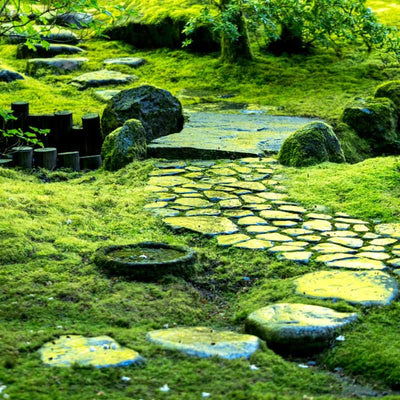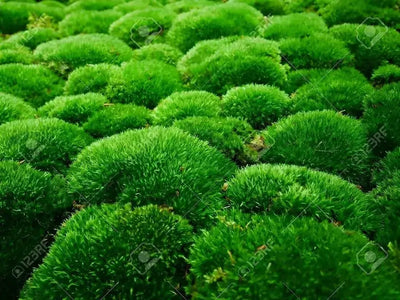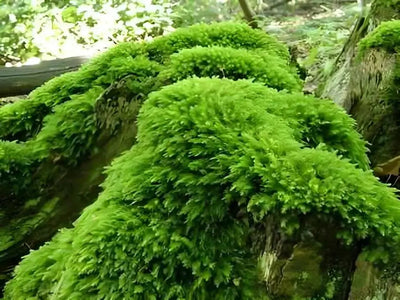Moss gardening is a unique way to landscape that is both quiet and sturdy. It has a rich green color, doesn't need much maintenance, and can thrive in shady regions, making it an excellent choice for folks who seek a peaceful and long-lasting home. Moss plants add softness and timeless beauty to outdoor areas whether you are creating a Japanese style garden or a small shady spot.
This guide will go over the basics of moss gardening from picking out the right types of moss to learning about their benefits and where to put them.
Understanding How Moss Works
If you want your moss garden ideas to do well, you need to know how moss grows. Mosses don't have roots like most plants do because they are non vascular plants. Instead, their leaves are how they take in water and nutrients. Because of this, they do well in places where other plants don't do well, like shady spots or areas with hard soil.
- Moss grows best in wet and shady places where the humidity stays steady
- Rhizoids are tiny filaments that it uses to stick to things like rocks and tree trunks
- This ability to adapt lets gardeners turn even rough spots into lush green retreats in moss gardening
- Try the Carpet Moss from TN Nursery for a thick and soft carpet look
- It grows well in shady gardens along woodland walks or next to stepping stones and makes a great ground cover
Why Moss Plants Enhance Your Garden
Adding moss plants to your garden is good for the environment and looks good too. Not only are these old plants beautiful, but they also clean the air and keep moisture in the soil.
Environmental Benefits of Moss
The ability of moss to hold water is one of its main advantages and Moss helps keep the soil moist so plants do not need to be watered as much and that is why it is great for sloped places or stream banks because it stops erosion. Moss naturally cleans the air in your yard because it soaks up dust and pollution.
Aesthetic and Practical Advantages
Moss is good for the environment and it also looks nice with rocks pavers and tree bases because it is natural and peaceful. It looks beautiful all year because it is lush and evergreen which makes it great for moss landscaping projects.
Cushion Moss is a good choice if you want to add height and depth. This moss grows in soft dome shaped clumps that give terrariums or shaded spots depth and visual interest.
Types of Moss and How to Plant Them
Understanding the different types of moss helps you choose the right one for your space when planning a moss gardening project. Each species has its own unique look, way of growing and place it likes to live.
These are some popular types:
- Carpet moss: Grows slowly and thickly to make a mat that looks like silk. Perfect for paths and fields that get some shade
- Cushion moss: Forms round clumps and looks great in rock gardens or planters that get some shade
- Fern Moss: This is a taller type with feathery fronds that look like tiny ferns. It's great for moss landscaping with a forest theme
For the greatest results, plant moss in a place where it will get little light or heavy shade. Gently press the bits of moss into the ground or the area you want to cover. Make sure they cling together well so they can hold water. Water it a lot for the first two weeks to help it get used to its new home.
Fern Moss is available at TN Nursery if you want to add something soft and woodland like to your garden.
Where to Plant Moss in Your Garden
As you can see, moss is very flexible and can grow in many places. To get you started, here are some moss garden ideas:
- Trails in the shade: Place moss between stepping stones or along paths in the shade for a soft, natural look.
- Rock gardens: Moss sticks well to rocks and gives stone features a mysterious look.
- Under Trees: Swap out patchy grass for moss to make a low maintenance green mat under big trees.
- Water Features: Moss makes a lush natural border around ponds or waterfalls that helps water stay in the ground.
- Container Gardens: For indoor fun make small moss terrariums or bonsai displays.
Moss doesn't need to be mowed, fertilised or treated with chemicals because it can take care of itself. Because of this moss gardening is a great choice for eco friendly gardens that care about both looks and longevity.
Moss Care and Maintenance Tips
Even though moss doesn't need much care, here are some easy things you can do to keep your garden looking great all year:
- Keep It Moist: Water it when it's dry to keep it from drying out especially in the summer
- Don't walk on mossy places: Keep them away from getting compacted
- Get rid of trash: To keep the moss surface clean gently brush off any leaves or twigs that have dropped on it
- Watch the sun: Moss likes indirect light so do not leave it in the sun for long amounts of time
These simple steps will help your moss plants stay healthy and beautiful by making sure they stay lush and green.
FAQs
What is a moss garden?
A moss garden is a landscape or part of your yard where moss is grown as the main plant to make a peaceful, green ground cover.
What types of moss are best for moss gardening?
Because they are hardy and have a lot of texture, Carpet Moss, Cushion Moss and Fern Moss are the best picks.
What are the disadvantages of moss plants?
Moss can grow slowly and needs constant moisture, so it doesn't do well in places that are very dry or sunny.
Is moss eco friendly?
Yes. Sustainability is one of the main benefits of moss. It cleans the air, keeps the earth stable and grows well without fertilisers or pesticides.
What plants grow in moss?
Ferns, hostas and other plants that like to be in the shade look great with moss, making the effect of a green forest even better.




